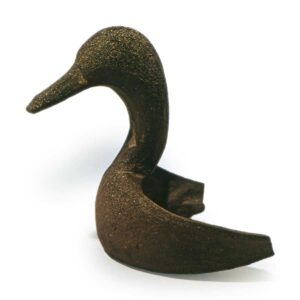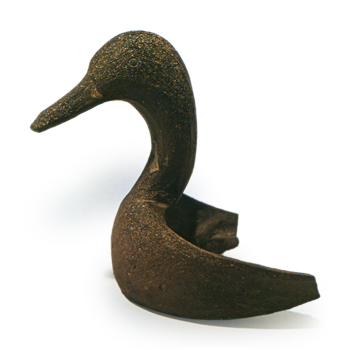
Excavated from Kiln No. 4, Kurozasa, Fukutani-cho, Miyoshi City, Aichi Prefecture, Japan
8th century
Height 12.6cm, Width 11.0cm
Ceramic inkstones first appeared in Japan in the latter half of the 7th century, first as round-faced inkstones and then as wind-lettered inkstones. The Sanage kiln produced various types of inkstones from the end of the 8th century to the first half of the 9th century, a period of alternation between the two types of inkstones. This inkstone is a rare example of a long-necked waterfowl head. The eyes are made of bamboo tubes, and the feathers are painted on the inkstone, but the movement of the figure is well captured in this inkstone.



